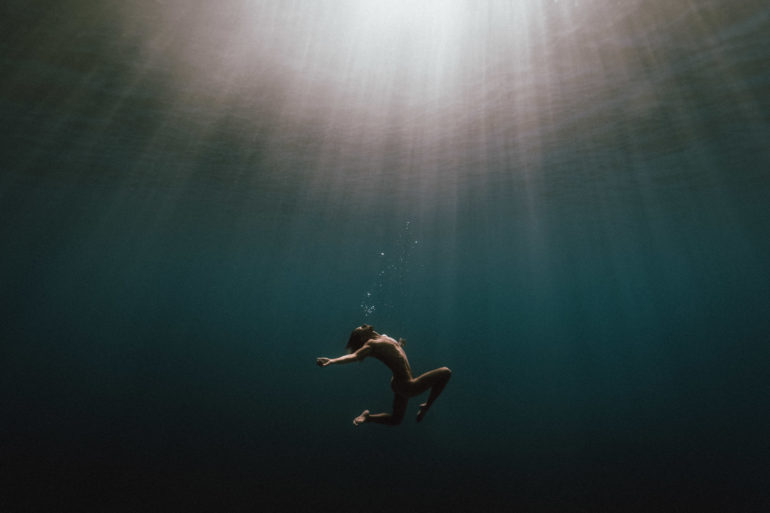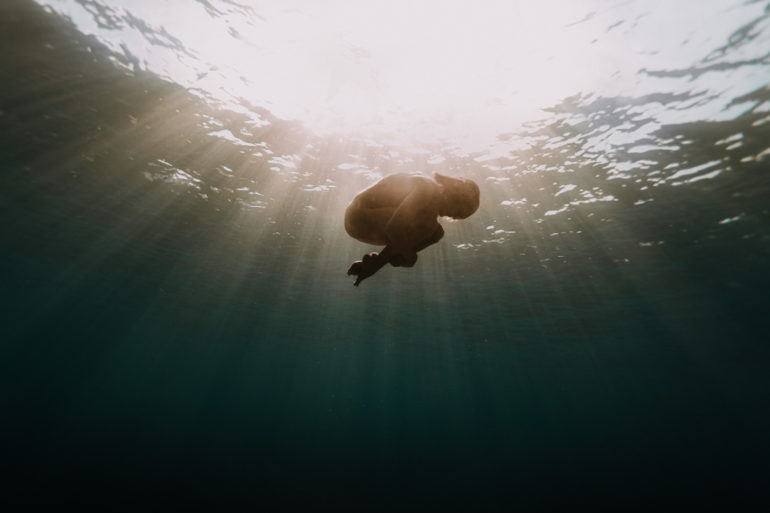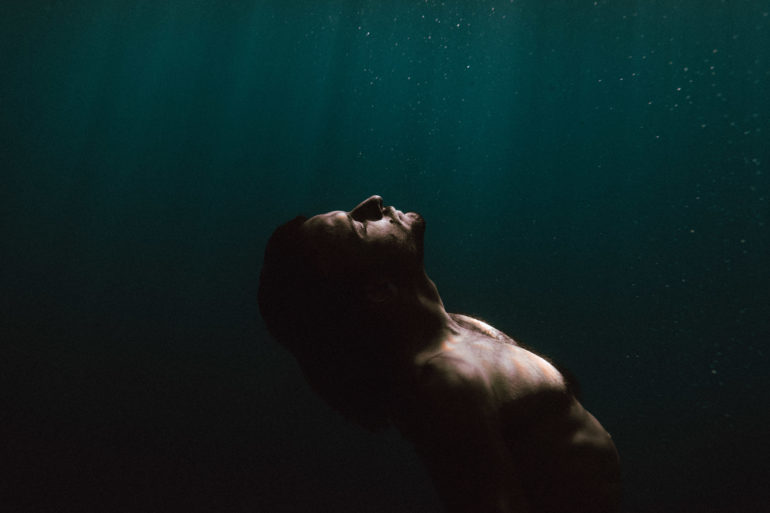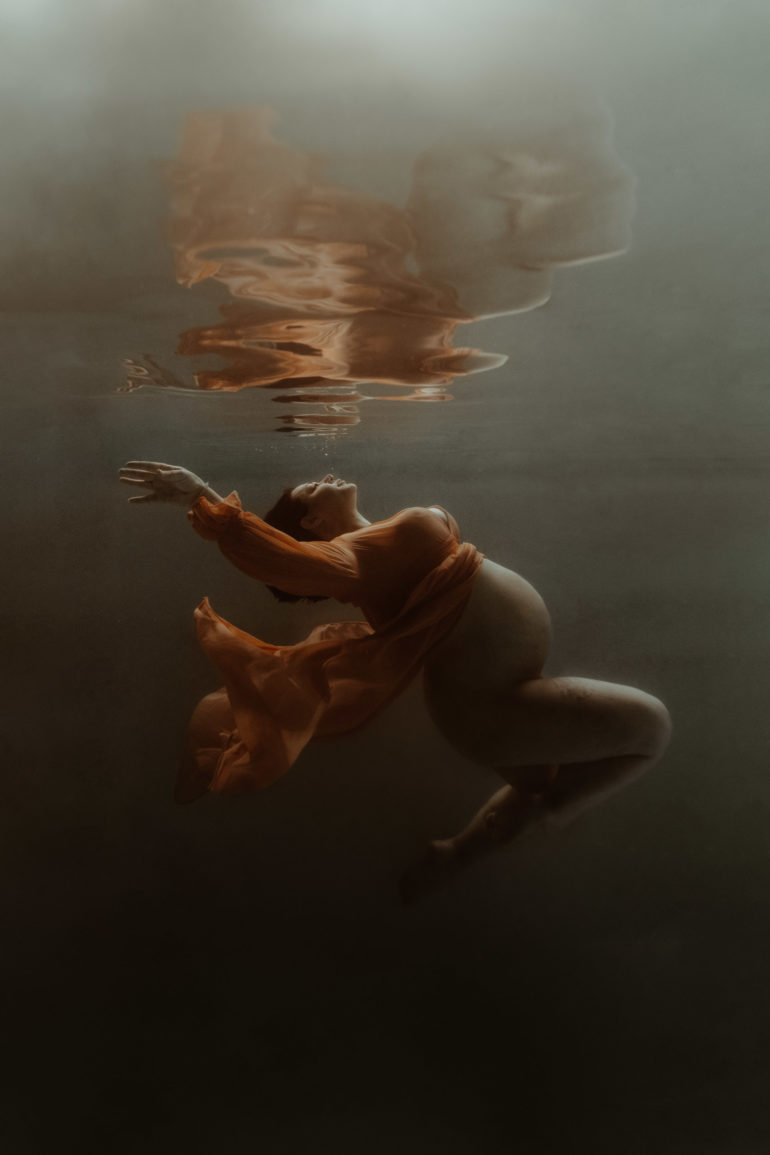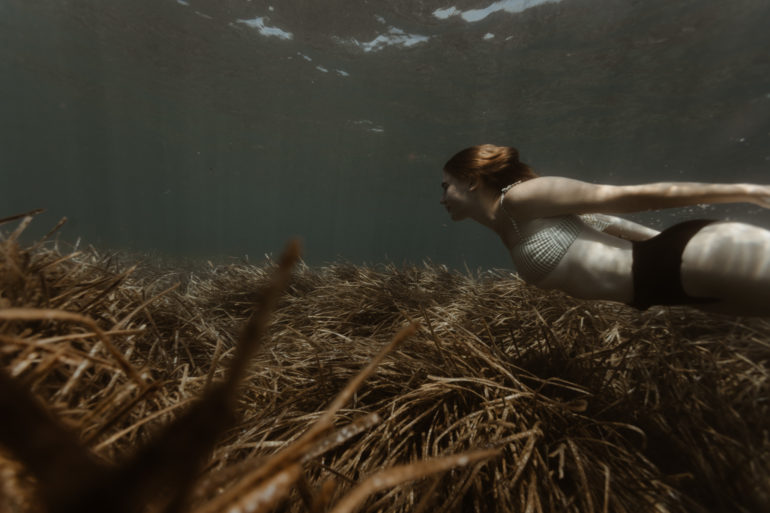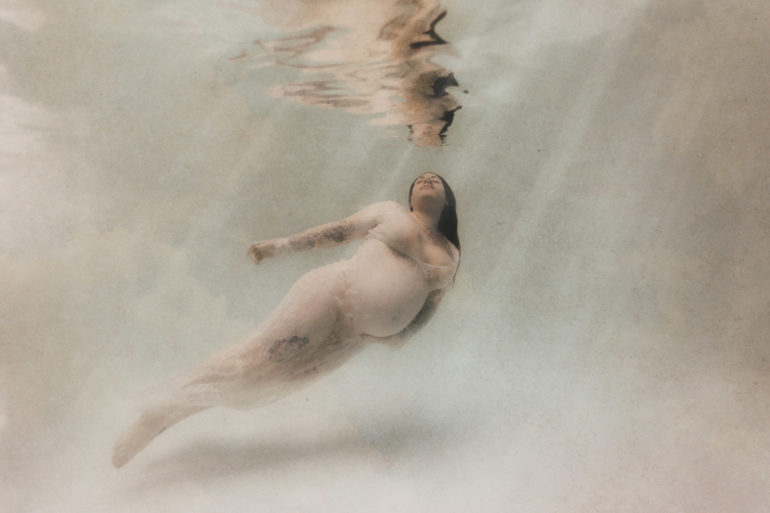
“I didn’t recognize myself in these ‘too perfect’ images,” photographer Alison Bounce tells us in an interview. “Today I modify my photos slightly to compensate for the constraints of water. They are more authentic.” Alison is an underwater photographer with work that draws inspiration from paintings. Her work is simply stunning, and I found something almost romantic about it. Once we talked to her, I discovered some incredible stories.
It’s a dream for most photographers to go to Antarctica. Alison not only did that, but photographed underwater there. Can you imagine how amazing that would be?
We hate banner ads too. Download our app for iOS, iPad, and Android and get no banner ads for $24.99/year.
Editor’s Note: This story was translated with clarifications in English.
The Essential Camera Gear of Alison Bounce
Hey, I’m Alison Bounce, Underwater Photographer and today, for lack of being able to take you underwater with me, I propose you dive in my waterproof bag! Please fasten your waist belt, spit into your mask and get comfortable in your bathtub, the underwater immersion begins now! I am regularly asked what equipment I take with me on my underwater shoots. So I’m delighted to finally be able to introduce you to my babies. Let’s start with the land equipment. Yes, I work with the same cameras I use for my wedding documentaries.
- Canon 5D Mark IV: There are two of them and they arrived in January 2017. Although a bit bulky and heavy, I love them. They are very robust and really tropicalized. I have tested the 5D mark IV drowning for you on several occasions. They are still alive .
- Canon 17-40mm F4: A dinosaur as some say. And yet my favorite. This one accounts for 80% of my land and underwater images. It’s true! It is very versatile. The sharpness is great. On the other hand, it has some distortion and less sharpness on the edges. This is not a problem in my work, I have adapted to it. However, it is important to note this because it can be a constraint for other people. I use it for wide shots in the pool and more documentary images at sea.
- Canon 35mm F1.4: A must-have underwater and on land. Very bright and very precise. This one is for close-up portraits. Less distortion but more complex to use underwater as it requires more distance. This is problematic if the water is not clear enough.
All this is coupled with 4 Canon batteries and 12 CF cards + 12 SD cards of 32 and 64go.
Now, let’s go to the wet part.
- IKELITE waterproof case: Like my cameras, there are also two of them. Being an IKELITE ambassador, I have both IKELITE closure systems. Both are designed specifically for 5d mark III or IV guns. Indeed, the pistons and triggers correspond to the buttons on my cameras. So, once my camera is placed inside, I can access all my controls. It seems a bit complex at first, but if you can operate your camera with your eyes closed outside of the water, you’ll have no trouble getting to grips with the controls on the waterproof housing.
- Dome: I also have two. One for each housing model. Easier when I travel as one of my housings can have both lens mounting systems. The dome is coupled with my 17-40mm. As a wide-angle lens, I need maximum visibility for my images. If I did not use a dome, my field of view would be more restricted.
- Flat port: For the 35mm! It is optimal for close-ups as it implies a magnification of the lens when immersed.
- Strobes IKELITE: My favorite underwater lighting system, the underwater flashes. Very powerful, they are only used underwater. They have a pilot light for photos and a continuous mode for video shooting.
- STELLAPRO headlamp: a 15000-lumen auxiliary lamp. I take it everywhere. Very compact, it is composed of several LEDs which diffuses the light better.
Less technical now but just essential, the accessories. This list corresponds to my best practice.
- The Mask: As you probably know, our vision does not adapt to the water environment. The mask is mandatory if you want to see clearly what you are photographing. There are lots of models: for diving, snorkeling, underwater hunting, leisure, etc. My favorite is the vintage porthole mask from BEUCHAT. Bigger air volume, wider field of vision, and funky aesthetics. It represents me perfectly. For deep dives, I can use this one because I’m on BTV compensation. I don’t need to go through the Valsalva to balance my ears. If this is not your case, opt for a mask with a nose 😉 I have two other masks: one freediving mask from MARES with a double opaque skirt to avoid being dazzled by the sun and another BEUCHAT mask for spearfishing with a very small air volume just great for deep diving. Tip: Try your mask before you buy it. Test it without the strap by placing your mask over your face. Breathe in and hold your breath. If the mask fits, it is your size.
- The snorkel: It’s there but I use it very little. I take it with me on personal nature shoots. When I need to be relaxed and dive deep. Generally speaking, I opt for a minimum of equipment. This is one of the reasons why I don’t photograph in the tank.
- Fins: Again, I have a whole collection. Plastics, fibers, and carbons with different lengths from 25cm to 98cm. It all depends on the environment I’m diving into and the project I’m doing. In the pool, if I have a foot, I don’t use them. If I don’t have a foot, I use a very short body surfing or swimming fin. In the sea, more like 65cm or 98cm. All of them are coupled with my little neoprene booties. I’m not a cold person, I rarely dive in a wetsuit, but the extremities have to be covered. You often cool down first with your feet and hands.
- Weight belt: Used to weigh yourself down, especially at sea when wearing a neoprene suit which increases your buoyancy. In the pool, I use it less and less. Today I work exclusively with empty lungs. For safety reasons and to save energy, I avoid weighing myself down too much. I prefer to have complete control over my body.
- Weigh Caisson: A revolutionary system developed by IKELITE, Trim Weight. It is positioned under the box and the dome with a small weight of 0.5kg or 1kg. It allows you to weigh down the box as some can float. The trim weight provides additional stability when shooting.
- Tools: In aquatics, you need to be a bit of a handyman. Always have a set of spanners and screwdrivers with you. There are often screws to tighten or seals to change
- Towels, swimming costumes, anti-UV textiles, and of course FRITTERS! In underwater photography, everything is about safety. Many people laugh when they see me coming in with them every time but they are very useful to me. Especially for my models. Although my sessions are supervised outside and inside the swimming area, I give floating chips to my models so that they rest regularly. The sessions must above all be pleasant
Finally, on the transport side, I use all the big luggage from Peak Design and the waterproof bags from Ortlieb and Northface. Very resistant and practical since they have wheels! The equipment being very heavy, my back still says thank you
Phoblographer: Talk to us about how you first got into photography. What made you want to get into underwater photography?
Alison Bounce: I discovered photography in 2011 and started as a pro three years later. I quickly wanted to become a specialist. My professional activity is very anchored in my personal life. Thanks to it I travel all over the world. In ten years, I had the chance to travel all over the world. The most recent one was in Antarctica under a sailboat! I was also wading wisely in the crystalline water of the Island, for me, the underwater photography story has to make sense.
I saw a future mother having fun immersing her eldest son in the crystal clear waters. This moment was so beautiful from below. When I returned to France, I did not hesitate a second; it was a revelation to me. Underwater photography was going to occupy a big place in my life from now on. I was looking forward to setting up a service combining photography and the underwater world. So I imagined an experience that allowed me to share my passion for water and my photographic practice. A real treat both in the pool and in the wild. I started by training to ensure the safety of my sessions and control my body underwater. Then I developed my own aqua-photographic techniques. In 2014, I sold my first sessions.
Phoblographer: Your images have a very painterly look. When you’re shooting, do you have a look in mind, or does that come to you as you’re in the moment? When you shoot stuff like this, how do your technical mind and artistic mind communicate with one another and achieve what you want?
Alison Bounce: Underwater photography requires a lot of preparation. I like to have long discussions with my muses about the images we will create together. In my mind, we are a team: the water, my Muses, my Assistants, and I. I love to draw some sketches to share my vision of the project with them. On the day, because of the emotions, we create more than the basic mood board. And the final touch comes during post-processing. This is where I fine-tune my style.
Phoblographer: Your images and color palette have a very muted look. What attracts you to this render? Do you feel like color is an important part of how you create?
Alison Bounce: Colours are information. Underwater, the light being weaker, colors naturally turn blue and green. Red evaporates. In my retouching work, I like to keep this part of realism. My greatest inspiration comes from the paintings of the renaissance. The warm, almost monochrome tones, are simply driven by the cameos of light. I like to apply this to my images.
Phoblographer: We love that you photograph men and women! We often only see women in images. Do you feel like creating with one gender is different than with the other?
Alison Bounce: Thank you for highlighting it. It’s very important to me that my images are recognizable to everyone. Since I started photography, I promised myself that I would be able to photograph everyone, without exceptions. Physical beauty, gender, or ideological criteria are not interesting to me. However, I like to reveal the human being according to their true value. Their expression, their story. Observing a body move in the water speaks volumes. We are all unique and we all have our own way in the water. It is fascinating!
Phoblographer: For you, where does the magic happen: in-camera or in post-production? How much editing and Photoshopping do you typically do?
Alison Bounce: When I started underwater portraiture, I did not retouch my images much. I lacked the know-how, to be honest. I quickly learned and pushed my images as far as I could. I created new worlds, creatures with very magical textures. And then I felt like going back to a natural look. I didn’t recognize myself in these “too perfect” images. Today I modify my photos slightly to compensate for the constraints of water. They are more authentic. And it’s a real challenge to get a good photo as soon as you take the shot underwater!
Phoblographer: You’ve done stuff like maternity, advertising, and more. Do you feel like you’re an empath? If so, when you’re shooting, are you trying to channel your own emotions or that of your subject?
Alison Bounce: Photography is a true means of expression. To answer no to this question would not be honest. Like almost all photographers, I capture moments with my heart. My perception of the world, of the subject. There is a part to respect since they are custom orders and I’m trying not to distort who they are or the products. However, my composition and my lights reinforce the message of my vision, my personality, and somehow my story.
Phoblographer: Where are your favorite places to photograph underwater?
Alison Bounce: The ocean! Immensity and nature together. In my approach, I want to reconcile humans with water. And at the same time raise awareness of the richness it brings us. It is home to so many wonders. We must protect it. Photography at sea is to share a moment of discovery and extraordinary awareness. Photography takes second place in the experience.
Phoblographer: What was creating like for you during the pandemic?
Alison Bounce: I published a book. I wrote about the technical skills of underwater photography. It calls “Secret of underwater portrait”. I talk about gear, security, model directions and post-producing. I also had the pleasure to invite underwater photographers friends such as Brett STANLEY, Carlos GONZALEZ and Erena SHIMODA to expose their underwater perceptions. The book is available in French and English PDF on my website.
Be sure to follow Alison Bounce on her Instagram and check out her website.




